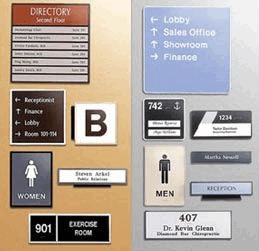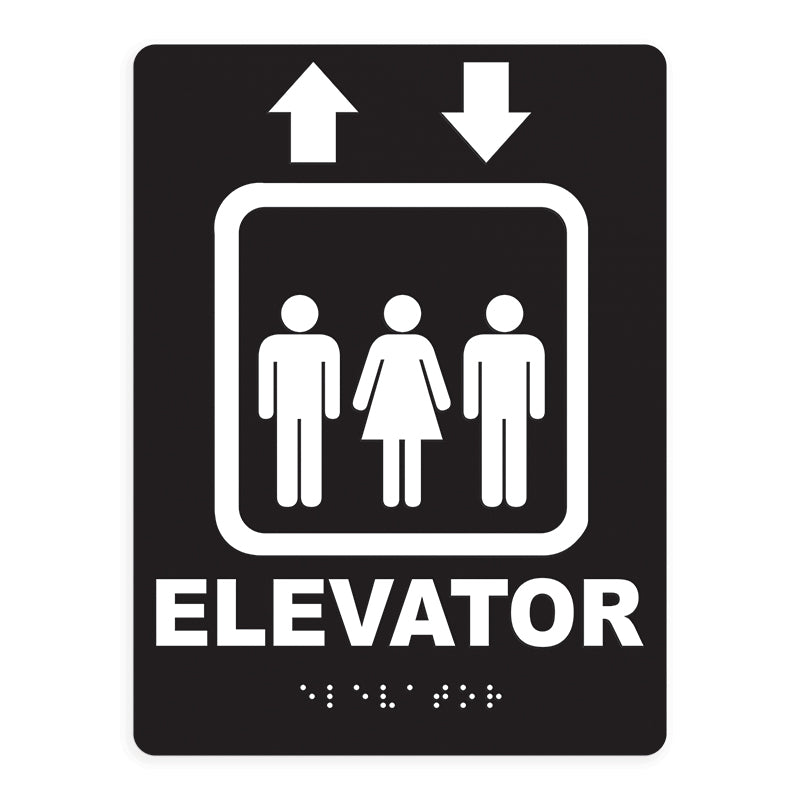ADA Signs: Making Certain Access and Conformity in Public Spaces
ADA signage plays a vital duty in assuring accessibility and compliance within public spaces, substantially adding to a comprehensive setting for individuals with disabilities. As we explore the nuances of ADA signs, from responsive attributes to design complexities, it's important to think about exactly how these aspects integrate to support the rights of all users.
Significance of ADA Signage
In modern culture, the value of ADA signs expands past simple compliance with legal mandates to personify a dedication to inclusivity and access for all people. These indications are vital in producing environments where individuals with disabilities can browse public rooms with the exact same simplicity and independence as those without impairments. By offering clear and standardized info, ADA signage ensures that every person can access centers, solutions, and details without obstacles.
The value of ADA signs exists in its capacity to improve the high quality of life for people with specials needs by advertising equal access. It eliminates the barriers that may otherwise hinder their capacity to get involved completely in community life. Furthermore, these indicators serve as noticeable signs of an organization's devotion to variety and equality, mirroring wider societal worths that promote the rights and self-respect of all individuals.
Moreover, ADA signage plays an essential function in public safety. By assisting people to exits, bathrooms, and other vital centers, it guarantees that all individuals, regardless of physical capability, can leave securely throughout emergencies. In recap, ADA signs is not simply a regulative need but an effective device for fostering a fair and inclusive society.
Crucial Element of Compliance

Positioning is crucial; indicators have to be mounted in areas that are conveniently noticeable and obtainable. Normally, signs must be installed between 48 and 60 inches from the ground to guarantee availability for both standing and wheelchair individuals. Tactile elements, such as Braille, are crucial for individuals with visual impairments, providing critical info in a non-visual format.
High-contrast shades in between the text and background are necessary to boost readability for individuals with reduced vision. The ADA mandates particular contrast proportions to make sure clearness. Additionally, character dimension is a key factor to consider, with minimal height requirements determined by the watching distance to ensure readability from numerous angles.
Style Considerations for Accessibility
Creating accessible signage calls for a meticulous strategy to guarantee it meets the requirements of all customers, particularly those with specials needs. The dimension of the text is equally important, with ADA guidelines recommending a minimum elevation based on checking out range to guarantee readability.
Contrasting colors between message and history are essential for visibility, especially for individuals with visual disabilities. A high comparison proportion helps distinguish the text from its history, enhancing anchor readability under different lights conditions. Additionally, tactile aspects, such as Braille and elevated personalities, are vital for individuals who are blind or have low vision. These aspects must be found at a regular elevation and placement to make certain very easy access and comprehension.
Moreover, the placement of signage plays a significant role in accessibility. Signs need to be mounted in places that are quickly reachable and unobstructed. Guaranteeing that signs is placed at proper heights and angles makes it possible for all customers, including those using mobility devices, to engage with them successfully.
Common Blunders to Prevent

An additional widespread mistake is the wrong positioning of signs. ADA standards specify precise elevation and area requirements to make certain that indications are reachable and conveniently noticeable by all people, consisting of those utilizing wheelchairs. Ignoring these guidelines not just obstructs access yet also takes the chance of non-compliance with legal requirements.
Additionally, inadequate comparison between text and history is a frequent oversight. Appropriate comparison is vital for readability, specifically for individuals with low vision. Developers sometimes select shades that are aesthetically enticing yet lack the needed contrast, making the message challenging to recognize.
Lastly, some developers fail to include responsive elements, such as Braille, which are crucial for individuals who are blind. Leaving out these attributes not only results in non-compliance with ADA guidelines yet also restricts accessibility for a segment of the population that depends on tactile information.
Future Trends in Signage
Innovations in technology and boosting recognition of inclusivity are forming the future fads in signage design. As society comes to be more mindful of varied demands, the integration of smart innovations right into signs is acquiring traction. Digital signage, as an example, is advancing to include interactive features and real-time updates, which can be critical in giving vibrant details in public rooms. These signs often incorporate touch displays or gesture-based controls, making it possible for customers to browse content tailored to their specific requirements.
One more emerging fad is the usage of increased truth (AR) to enhance individual experience. AR-enabled signage can overlay electronic information onto the physical atmosphere, providing aesthetically impaired individuals with auditory or haptic responses. ADA Signs. This innovation not only enhances accessibility however also develops an engaging experience for all customers
Sustainability is also a considerable factor influencing signs trends. Green materials and energy-efficient illumination solutions are being prioritized to straighten with global ecological objectives. Innovations in materials science are leading to the growth of even more weather-resistant and long lasting indicators.
Conclusion
ADA signage plays a crucial duty in guaranteeing ease of access and conformity within public rooms by including tactile elements, high-contrast colors, and calculated positioning. The adherence to ADA requirements not only assists in risk-free navigating for people with handicaps but also represents an organization's commitment to diversity and inclusivity. By preventing typical errors and accepting future patterns, public areas can remain to advance these values, guaranteeing that the legal rights and dignity of all individuals are respected and supported.
ADA signage plays an important function in ensuring resource availability and compliance within public spaces, significantly contributing to a comprehensive environment for individuals with specials needs. As we discover the nuances of ADA signs, from responsive features to design intricacies, it's crucial to think about exactly how these aspects coalesce to promote the civil liberties of all individuals.In contemporary society, the value of ADA signs extends past plain compliance with legal requireds to embody a dedication to inclusivity and access for all people. By offering clear and standard information, ADA signs makes certain that everyone can access centers, services, and details without barriers.
ADA signs plays an important role in ensuring ease of access and conformity within public areas by incorporating responsive elements, high-contrast shades, and strategic positioning. (ADA Signs)